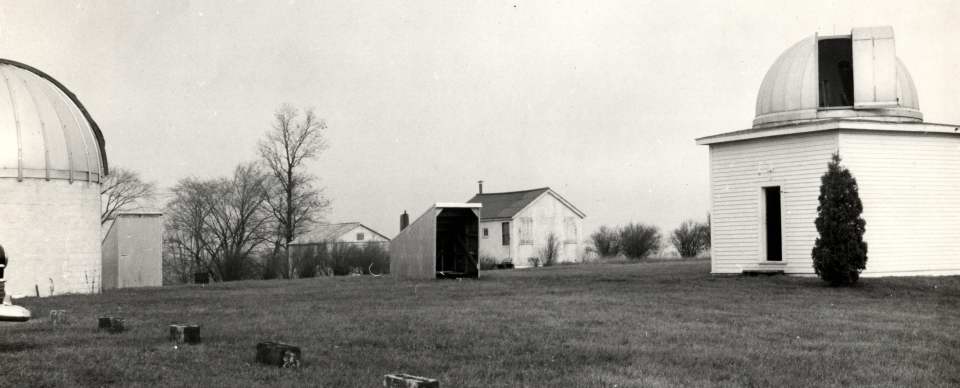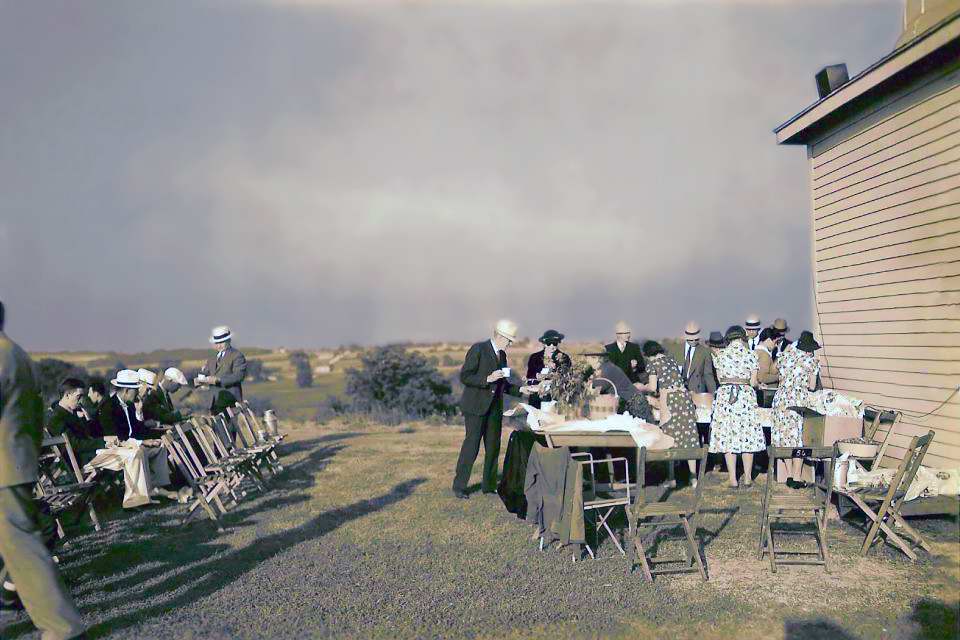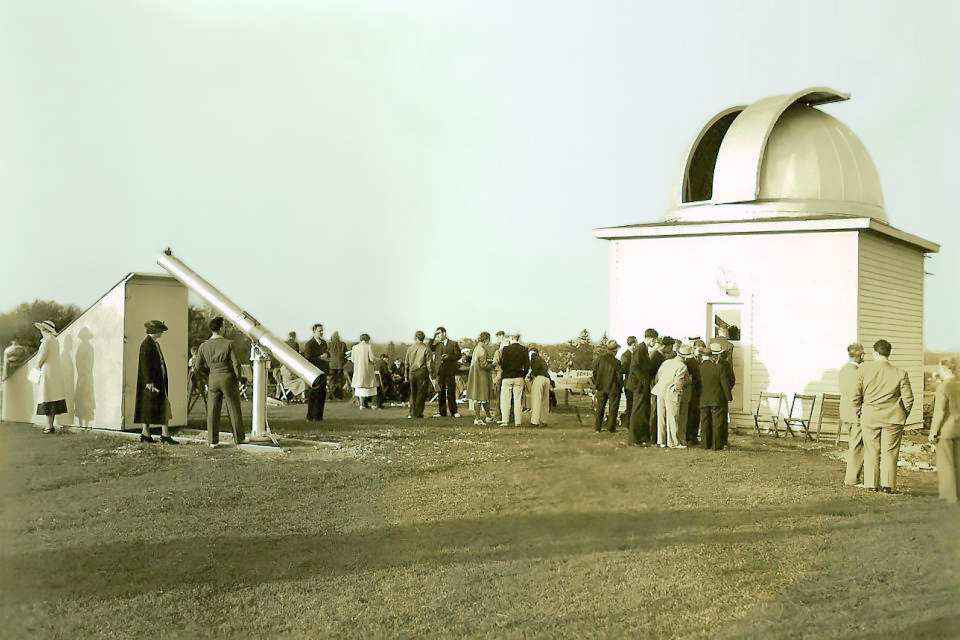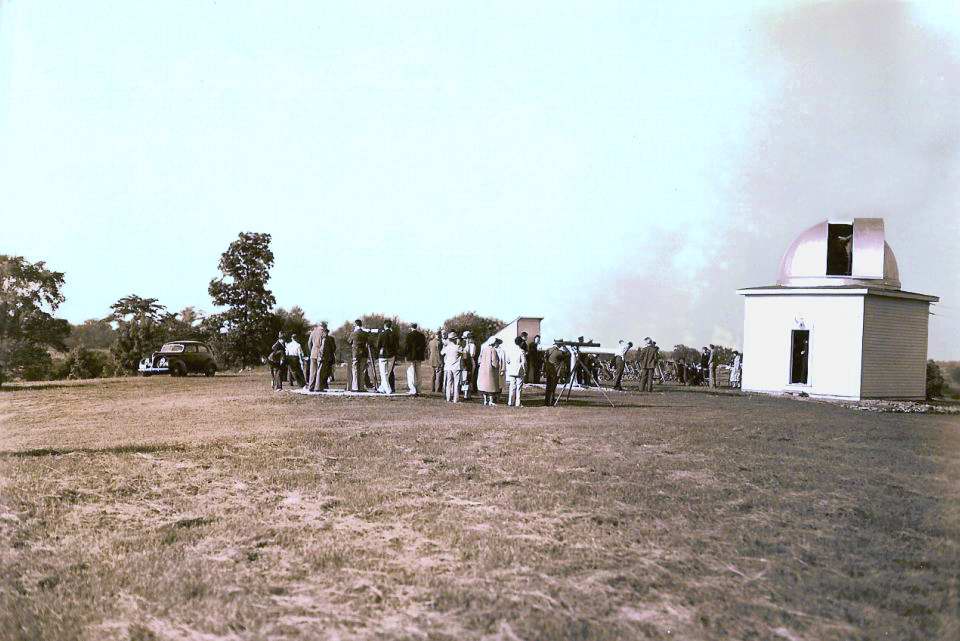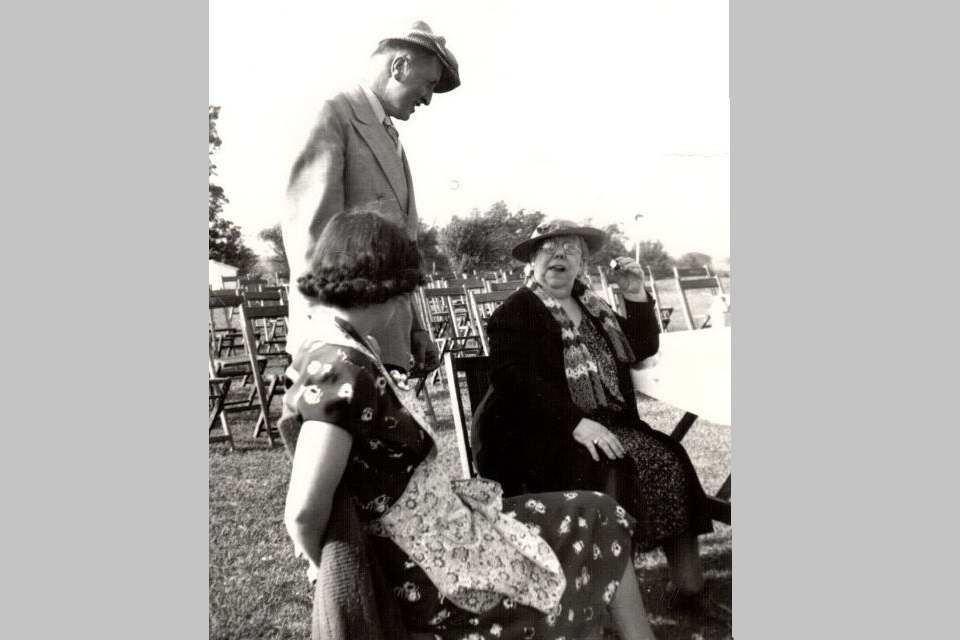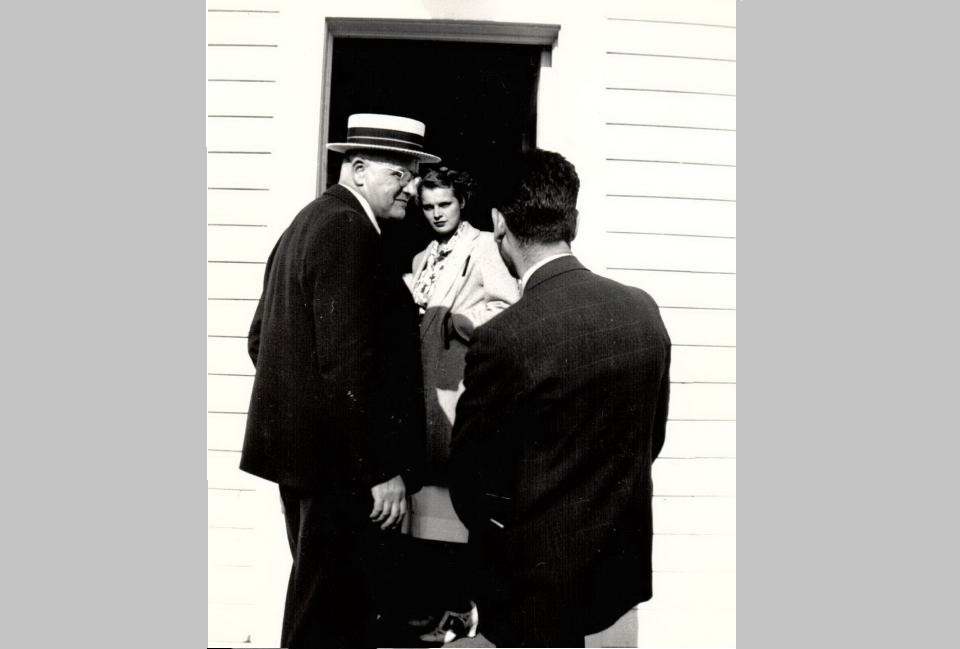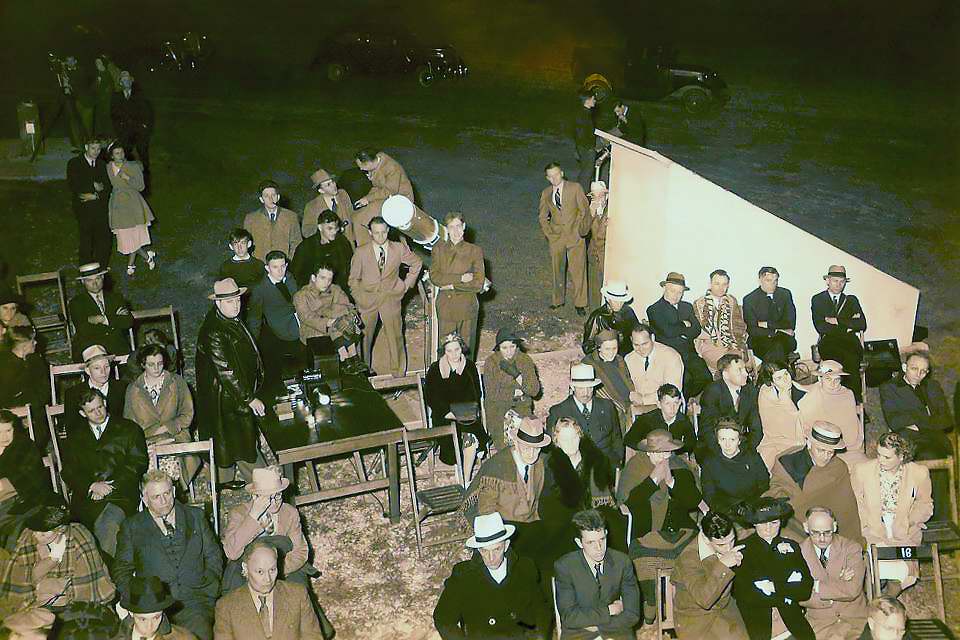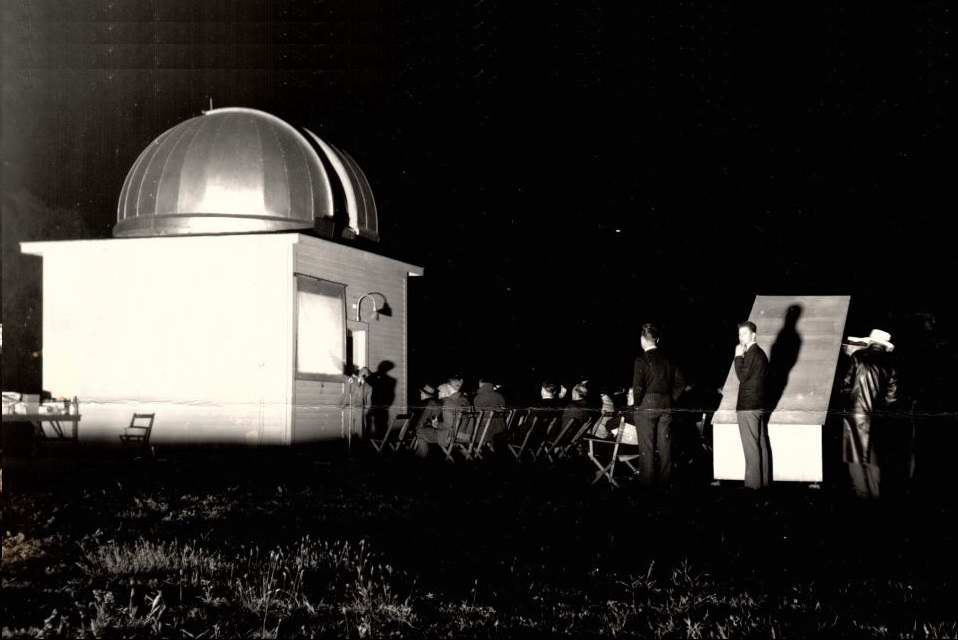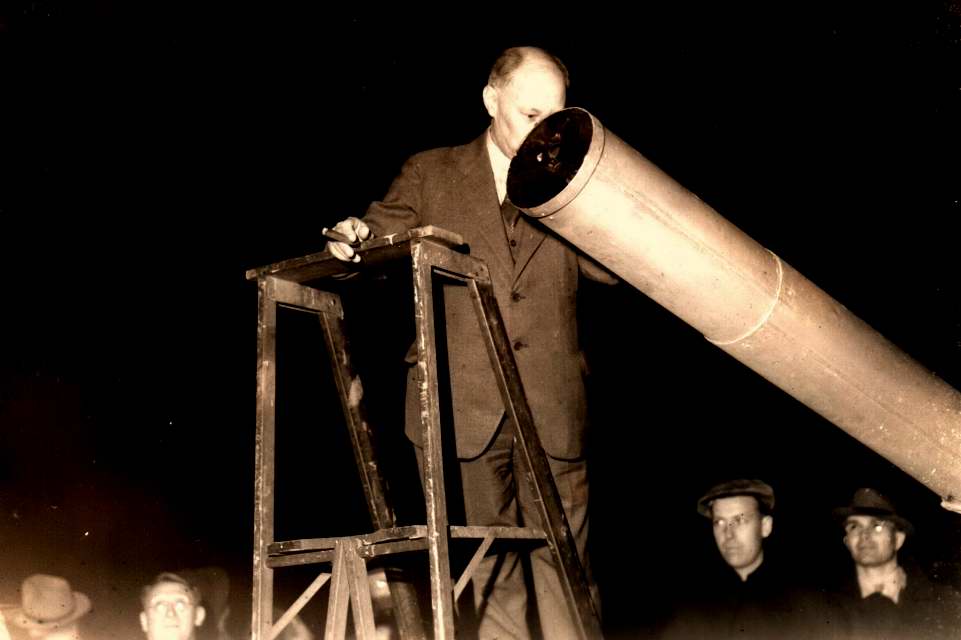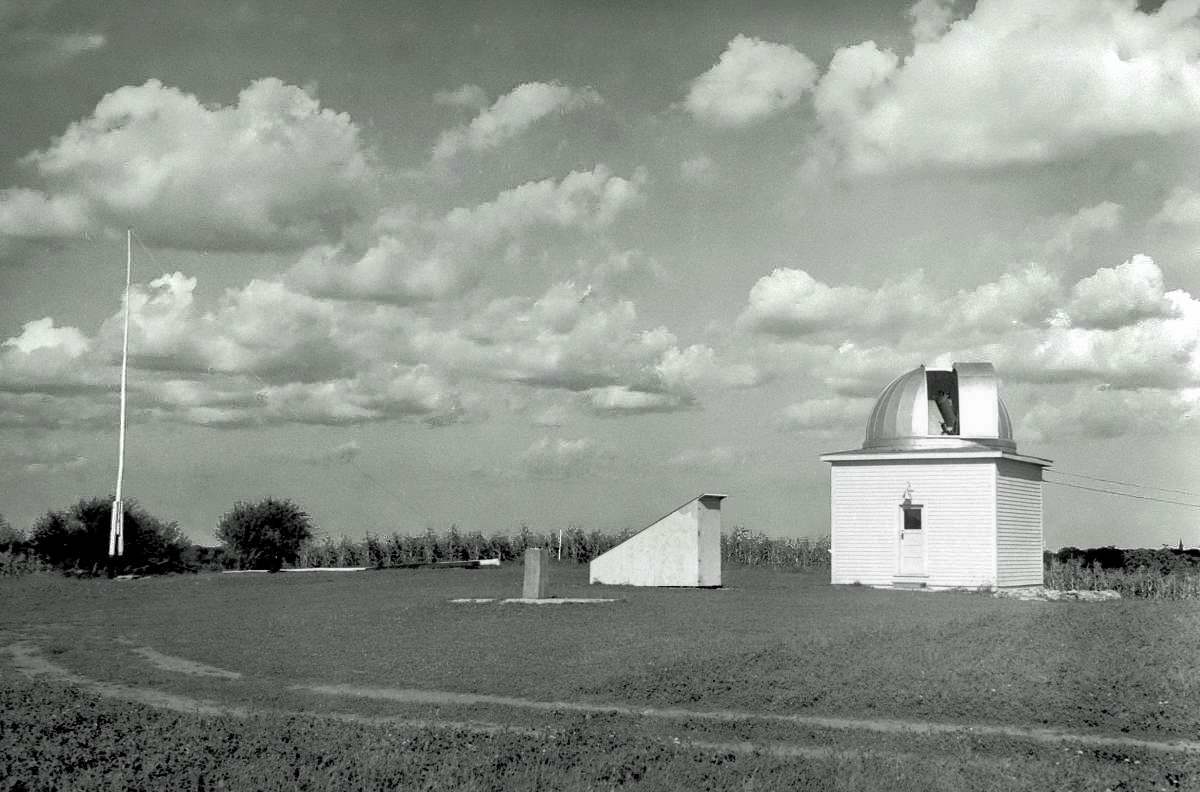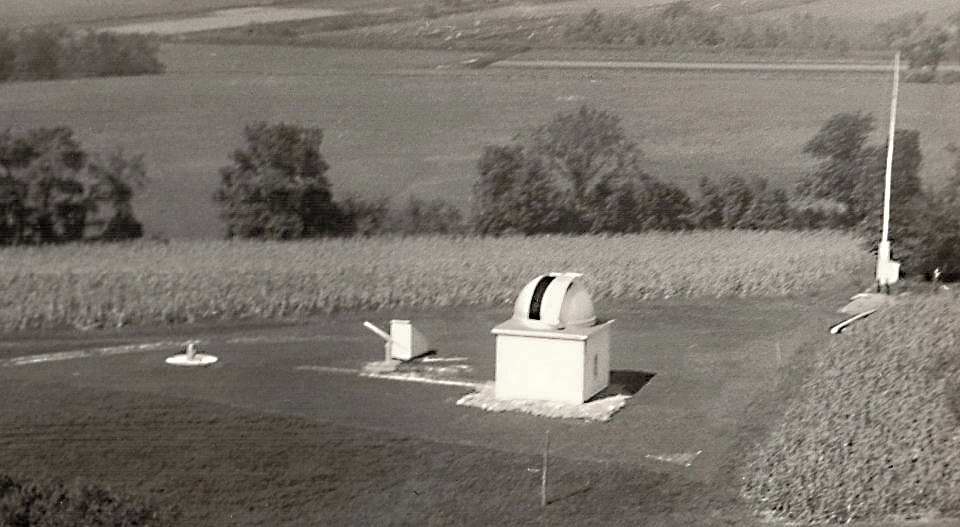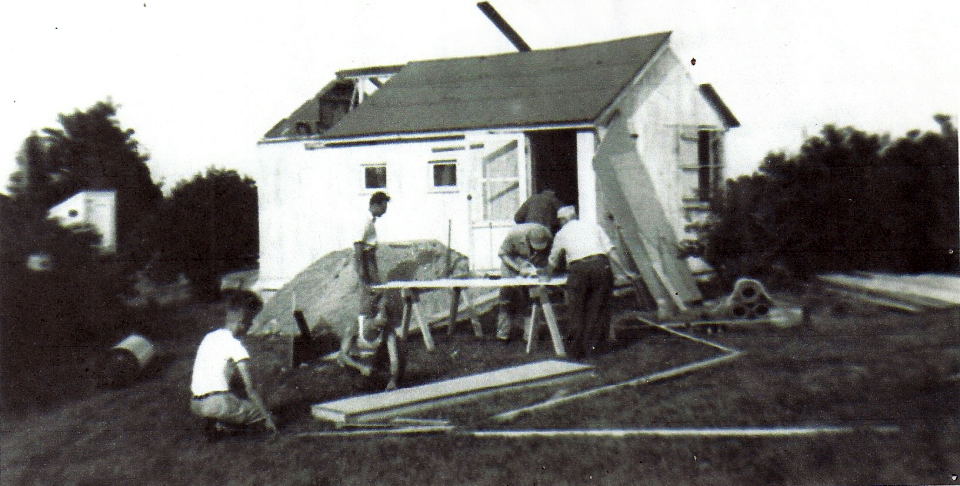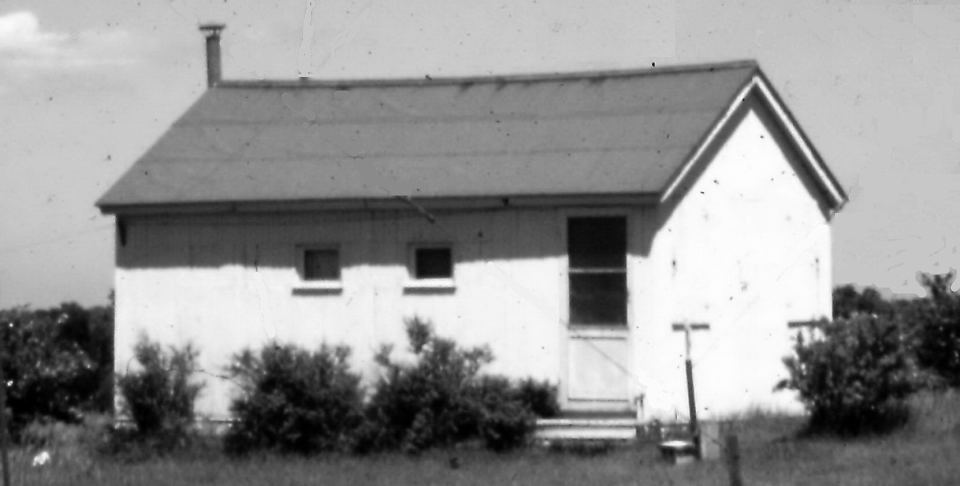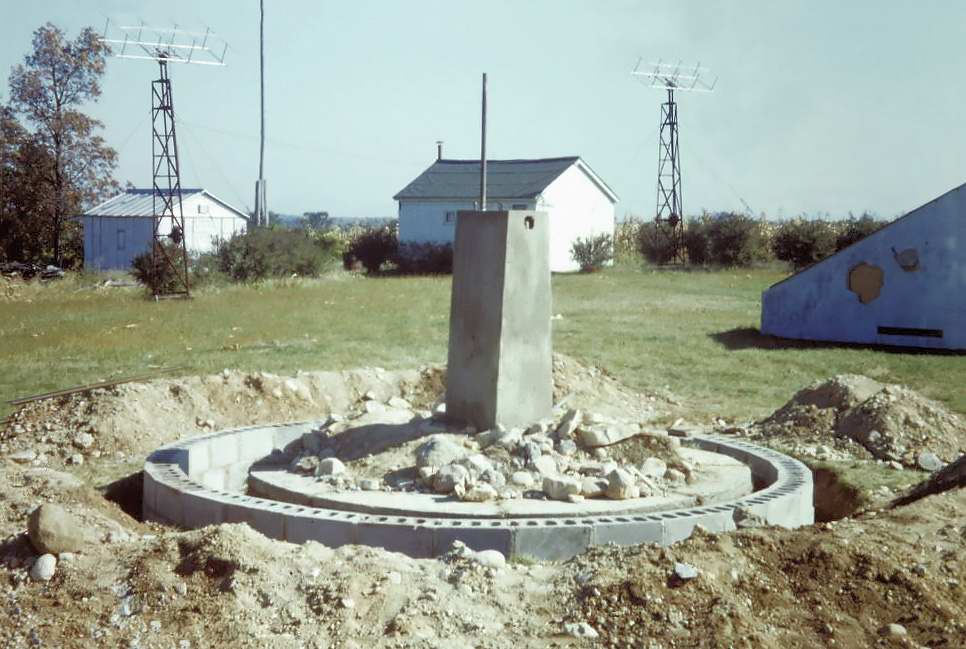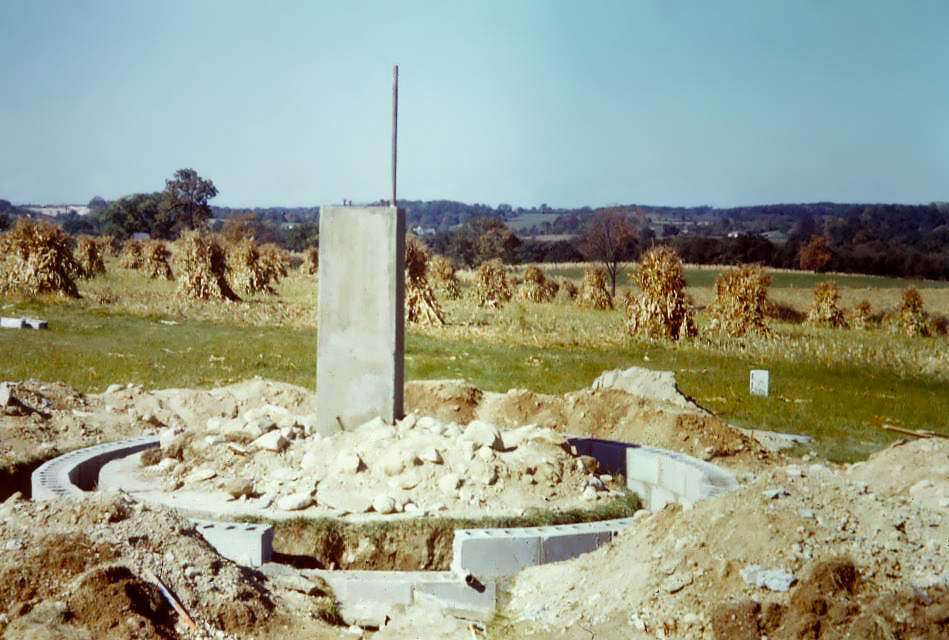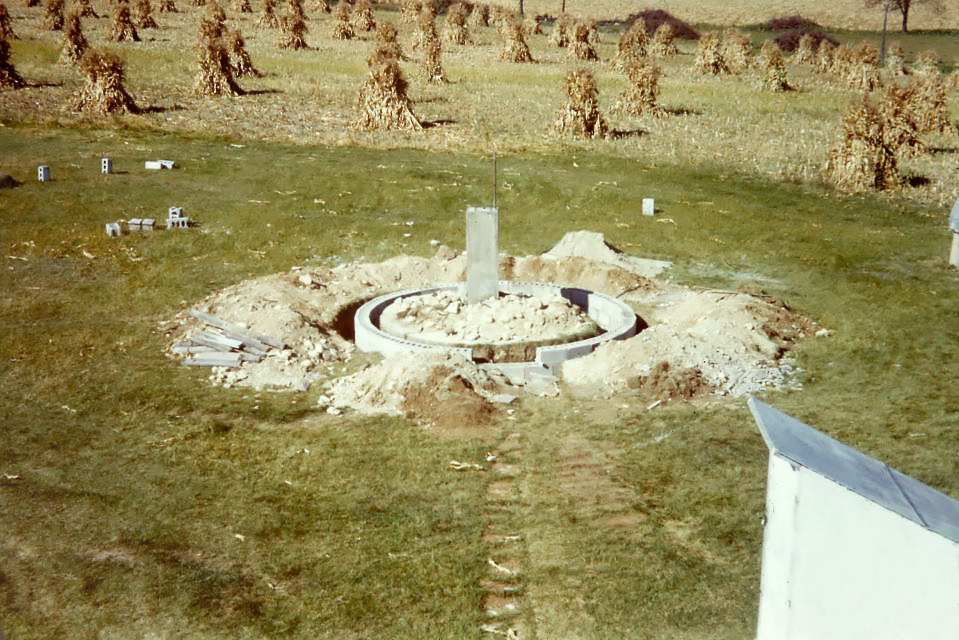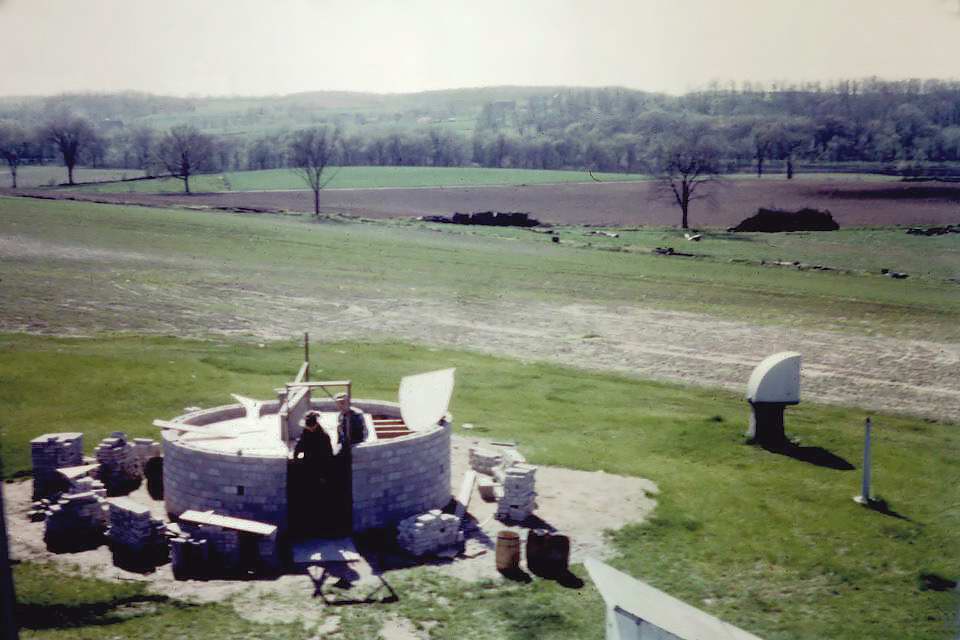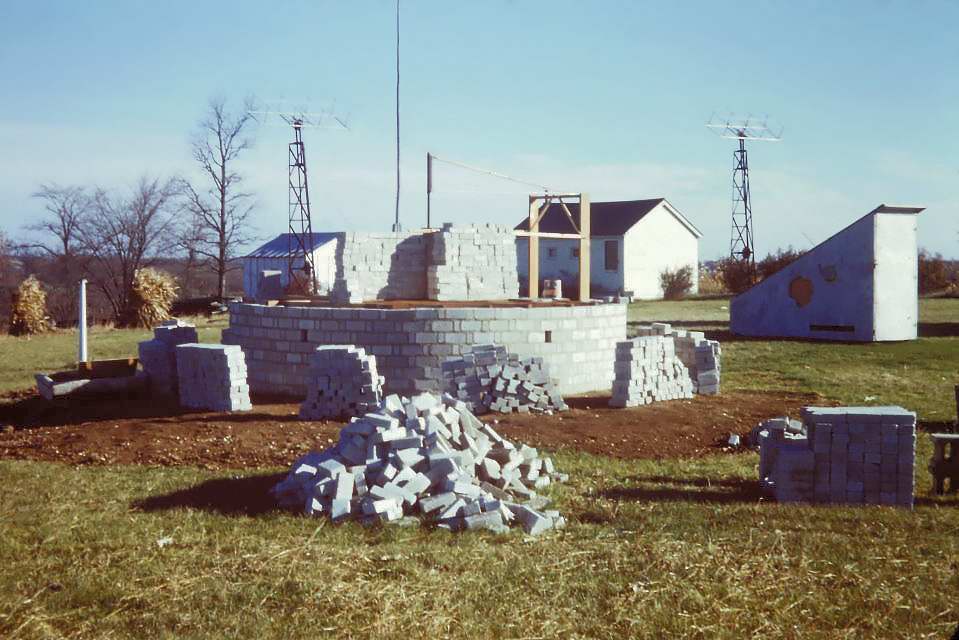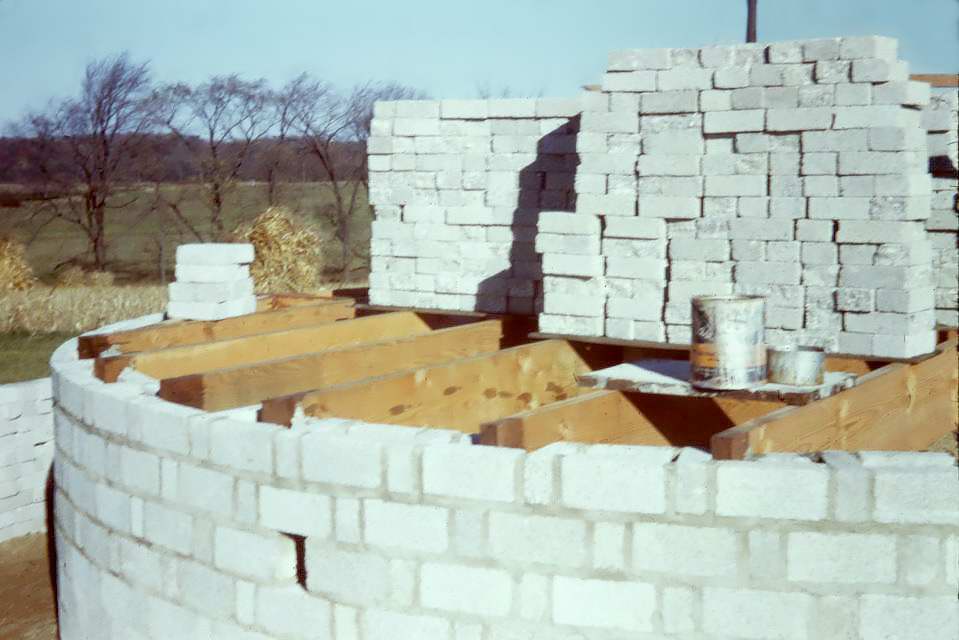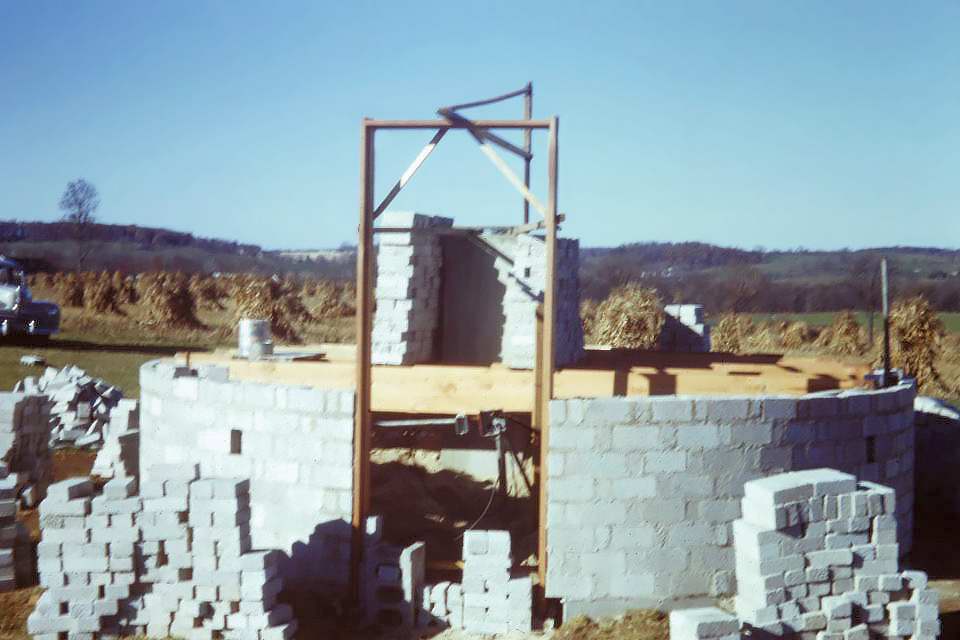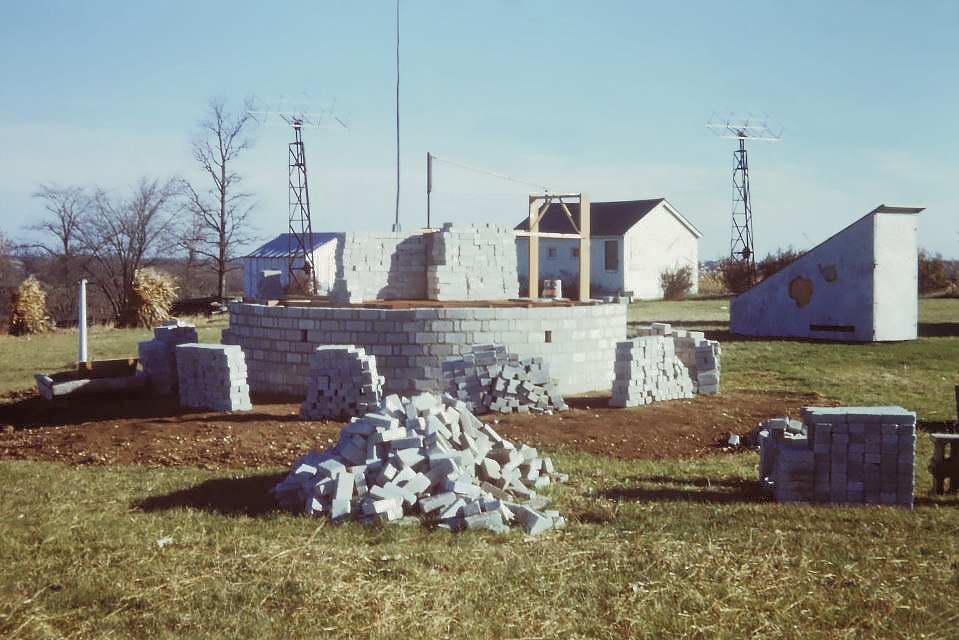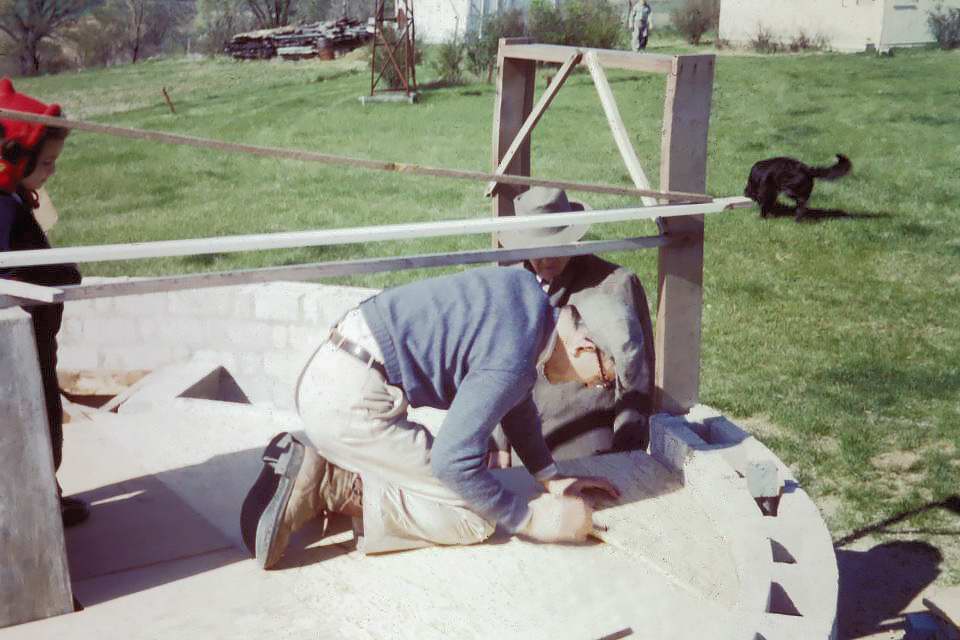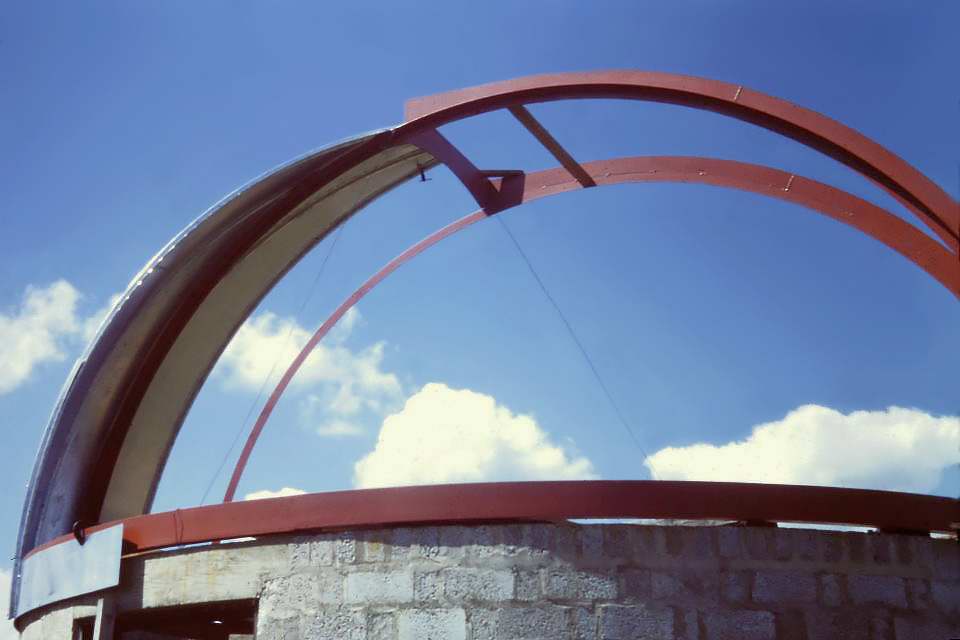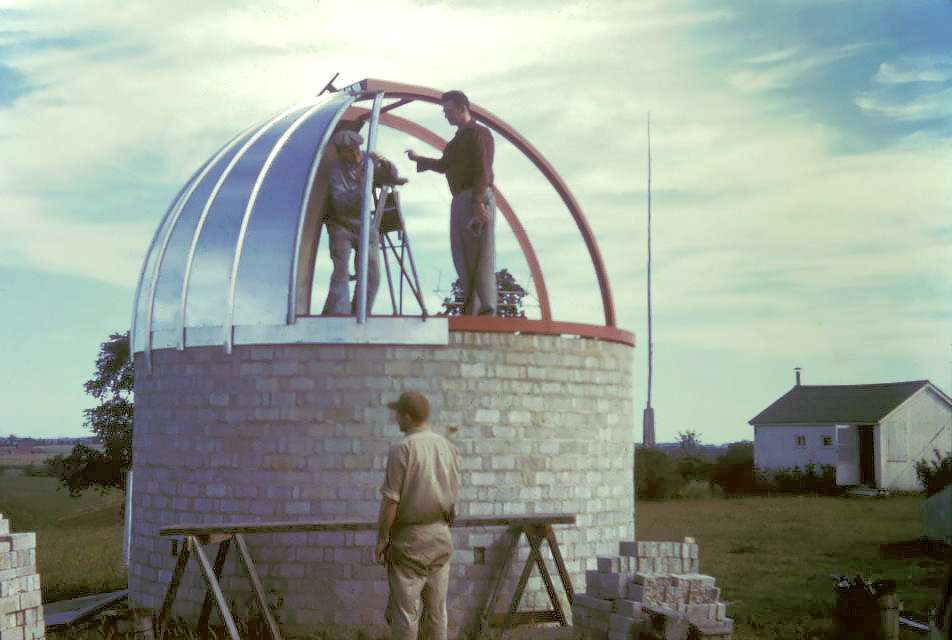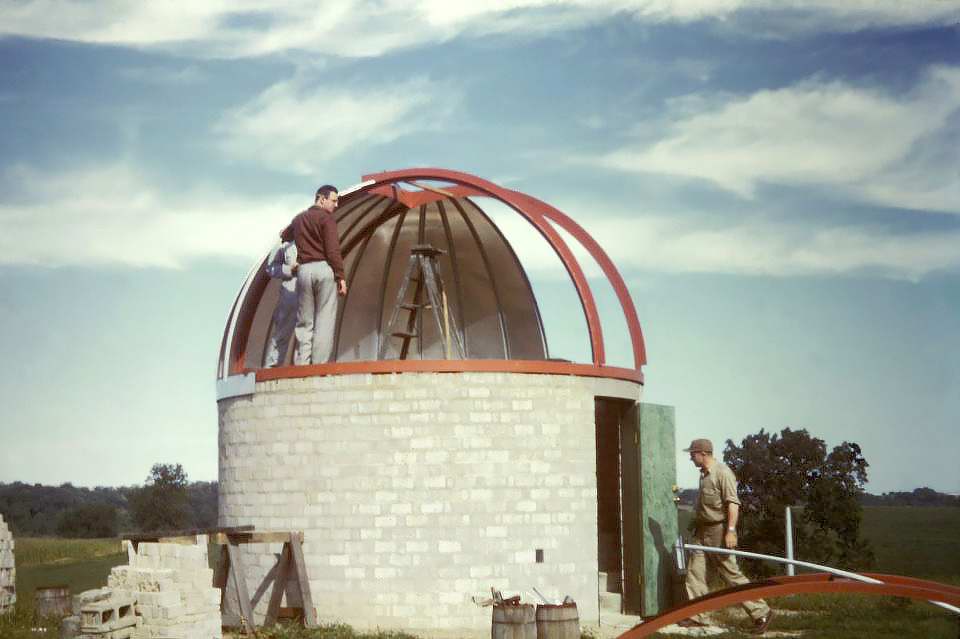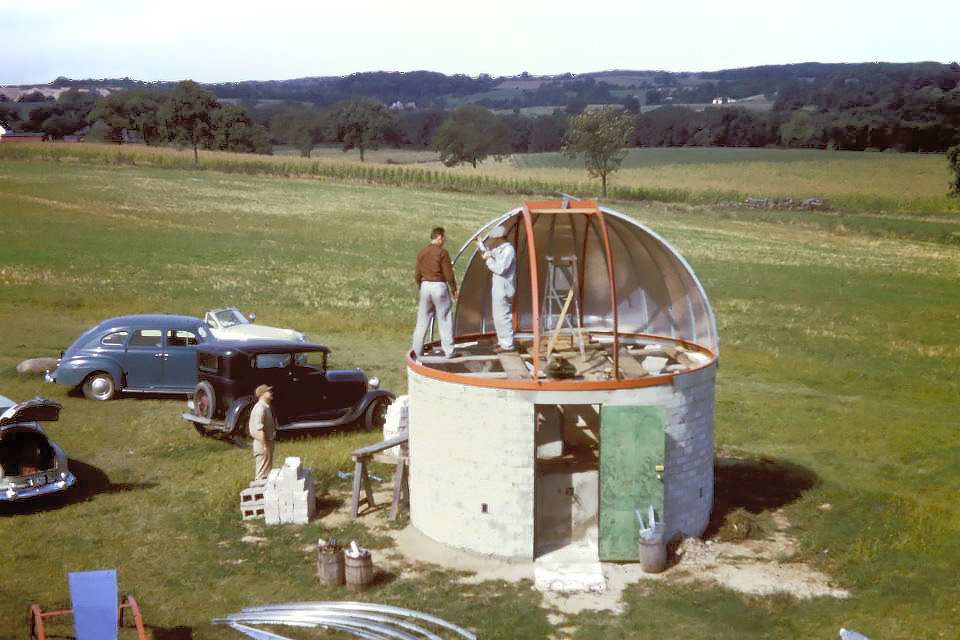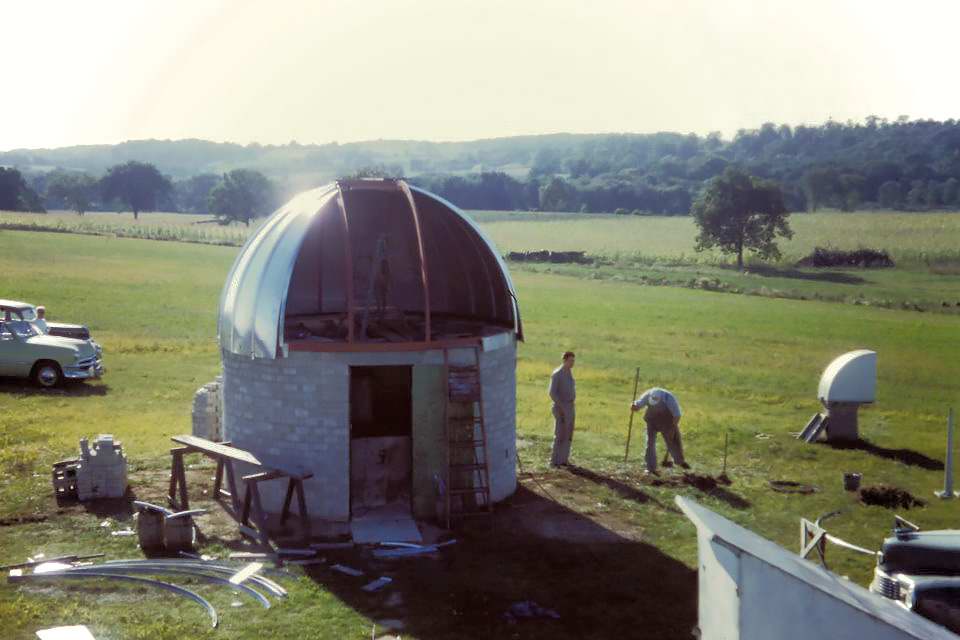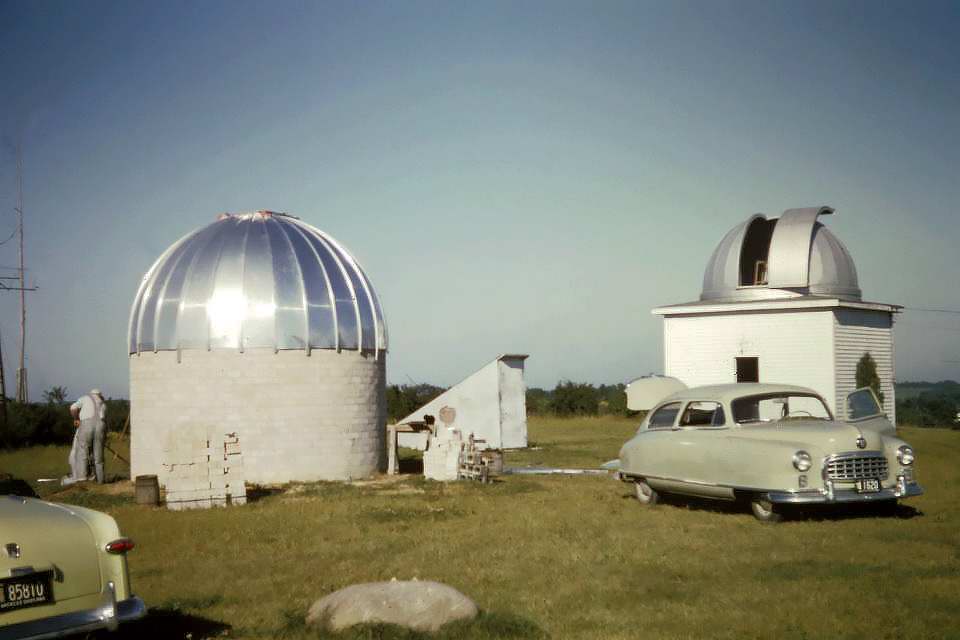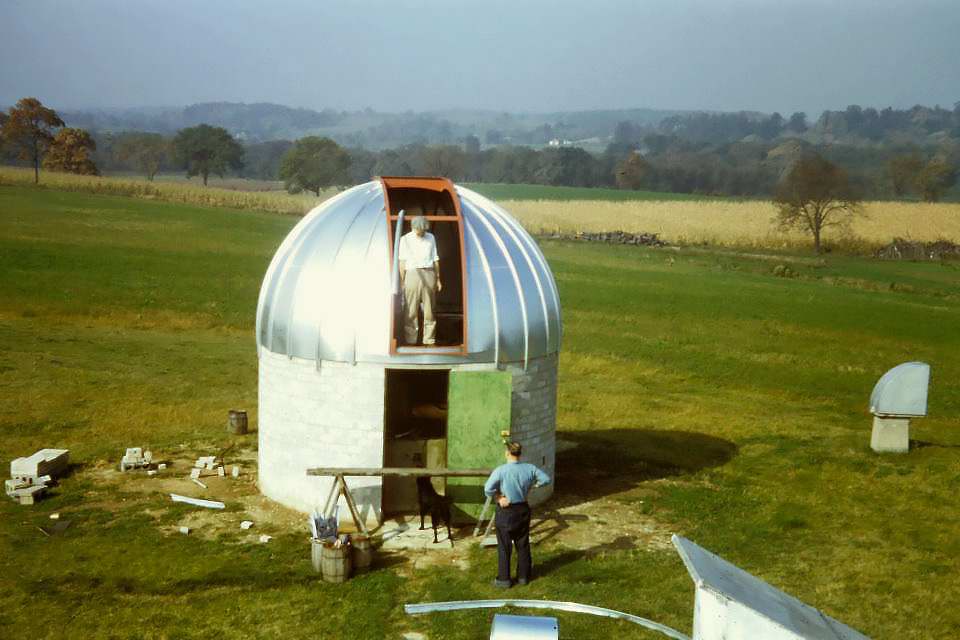Edward A. Halbach
Page 2, 1938-1954
Work on the 13-inch telescope continued though the winter and by late April work was completed. With the return of warmer weather, work on the observatory interior was also completed and early in May, exactly 10 months after construction had started, Armfield's renovated 13-inch telescope was mounted on the pier.
Read Halbach's account of the telescope upgrades and the observatory in AA, published in the June-July, 1938, issue.
On March 25, 1938, the property was officially deeded to the MAS, having satisfied the requirement of construction.
On June 18th, the observatory was officially dedicated and over 100 members and guests came to the event, many of them from Chicago, Madison, and other outside areas. There was a picnic dinner and when it was finally dark enough for slides to be seen, Ed Halbach, who was President at the time, presided over the event. M. J. W. Phillips made the dedicatory address which included a brief history of the building, illustrated by lantern slides of the various stages of construction. The main address was by Charles Hetzer of the Yerkes Observatory. As the sky was clear, the rest of the evening was taken up observing with the 13-inch scope in the building and many other instruments belonging to the members which were scattered about the grounds.
Shortly after the dedication, a 250 watt radio transmitter was installed to coordinate the group's duplicate meteor observations. For the antennae, the plan was to construct two 80 foot towers (which were presumably flag poles) with a wire strung between the two. In the picture above taken in the summer of '38 you can see the north tower. The south tower is lying on the ground. They got the pole painted, but that is as far as they got. Click here to see the same photo which was printed as a large poster that hung at the observatory or at the hobby shows. The lines were drawn on that photo to show the final plan. Because the lines are hard to see, the radio transmitter line is enhanced in yellow while the power line is enhanced in magenta. We assume the project was scrapped because it was impractical.
The above aerial photo shows the grounds taken on Sept. 24th, 1938 and we call it our "Field of Dreams" shot because it shows that our observatory was built in the middle of a corn field.
In 1938 and continuing until the end of 1941 with the outbreak of World War
II, almost every Saturday during the warmer seasons there was a work party
for maintenance and new construction and Halbach was usually there.
Late in 1938, the society acquired a voting booth building. It was arranged through the Election Commission and transferred to the Milwaukee Public Museum. The museum then loaned it, on an indefinite basis, to the MAS with the understanding it was returnable on demand, but that as long as we continued to use it, and carry on a program of public education without charge to visitors, it was ours. The structure served as an office as well as sleeping quarters for one shift of observers while another shift used the telescopes. Though it was initially called the clubhouse, it generally became known as the monastery. Such dedication was not without its hazards: Ed Halbach dozed off while driving home after one late session and smashed into a light pole, injuring his leg.
The basic building was complete by the end of 1939 with a stove for heat, but in 1940 it was partially disassembled so they could build a subterranean workshop. They also added a large safe to store important documents and smaller equipment like eyepieces.
In 1940, Halbach was voted into the AAVSO Council and served until 1943.
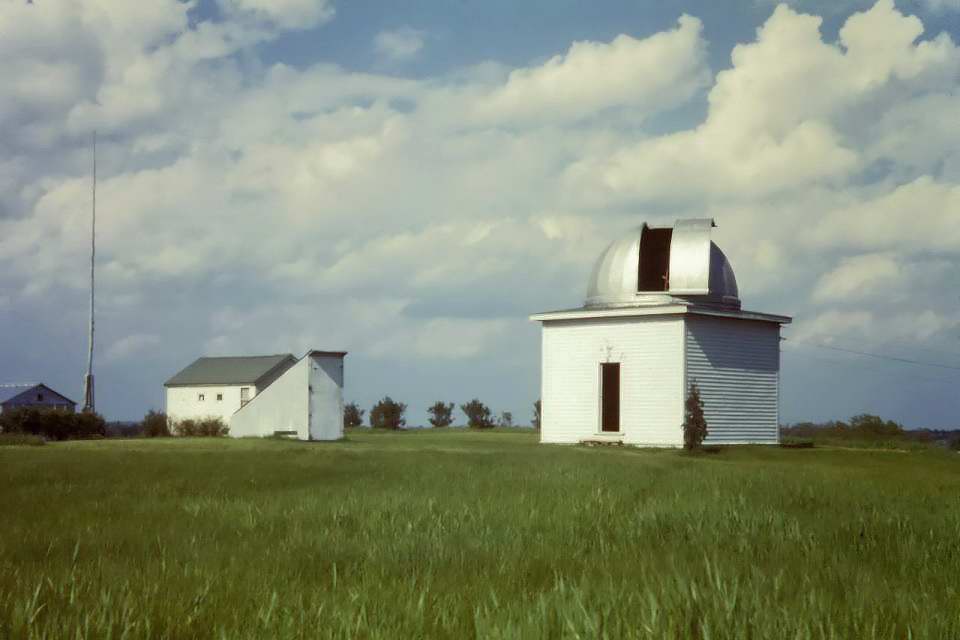
The observatory as it looked by the end of 1941. The Tool Shed is at the far left.
In 1942, Halbach married Jane Roth. They would remain married for 65 years until Jane passed away in 2007.
Despite all of his astronomical activities, he always found time for his family. He designed and built a
camping trailer so he could take Jane and their six children on cross country trips.
Also in 1942, Ed Halbach became the second Observatory Director, a position that he will hold for the next
35 years. But in that year, with the onset of World War II, between members
serving in the military and gasoline rationing, observatory activities slowed
to a crawl. In an effort to get additional gas rations, Halbach and Armfield
set up an optic shop, making roof prisms for the war effort. By the end of 1944, the optical shop failed and
Armfield then took a job with the Telephone Company of Indiana and Michigan,
moving to Ohio. With his departure Halbach would be the leader of the club.
Gas rationing would end in 1945 when the Japanese surrendered and a new era dawned at the observatory. There will not
be a single project where Halbach wasn't involved. The big news that year was that Ralph Buckstaff, a member who lived in Oshkosh,
informed the club that he would be donating
his 12.5" f/7.4 reflector.
In 1945 the MAS headed by Halbach conducted an expedition funded by the National Geographic to Pine River, Manitoba,
to tie the North American grid maps to the European grid maps. The expedition is successful.
In 1946 Halbach was offered a position at McDonald Observatory. He declines the offer.
In 1947, Halbach participated in the formation of the
Astronomical League and was elected their first President.
Also, that year Bill Albrecht and Halbach construct a prime focus camera for the 13-inch telescope.
In 1948, Halbach headed an eclipse expedition to Burma, sponsored by the National Geographic Society.
The group obtains 35 seconds of 35mm movie footage of the eclipse.
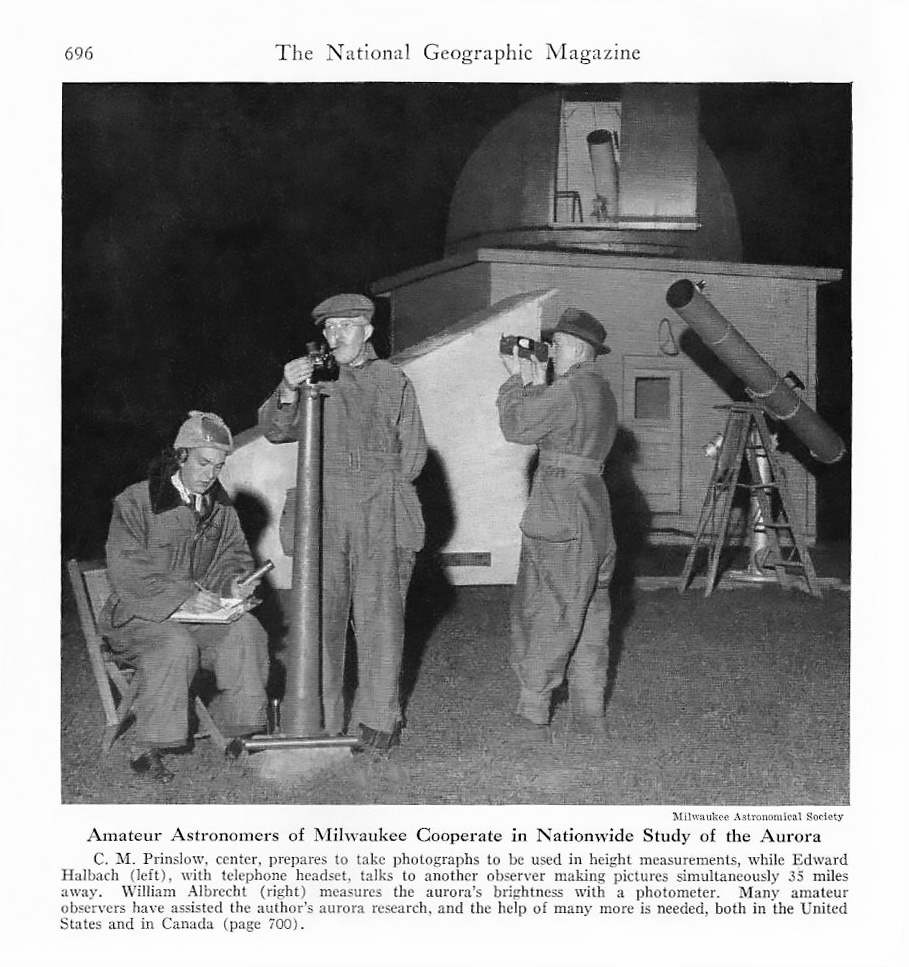 During the 1940's, amateurs became involved in studying the relationship between solar events, aurora, and the magnetic field
of the Earth. By comparing observations of solar flares, aurora, and ground currents, Ed was able to predict interruptions
in power and communications caused by solar events. This work enabled power companies to prevent interruptions of this type.
The MAS was part of a network of astronomers coordinating observations of these phenomena. Cornelius Prinslow,
Bill Albrecht, and Halbach,
of the MAS were featured in a 1949 issue of National Geographic article on the subject.
During the 1940's, amateurs became involved in studying the relationship between solar events, aurora, and the magnetic field
of the Earth. By comparing observations of solar flares, aurora, and ground currents, Ed was able to predict interruptions
in power and communications caused by solar events. This work enabled power companies to prevent interruptions of this type.
The MAS was part of a network of astronomers coordinating observations of these phenomena. Cornelius Prinslow,
Bill Albrecht, and Halbach,
of the MAS were featured in a 1949 issue of National Geographic article on the subject.
In the late 1940's and 50's, Halbach became involved in an Air Force project using solar
eclipse timings to link the North American datum with the coordinate grids of other continents. This work took
him on eclipse expeditions all over the world. The result of much of this work has remained classified to this day.
 In 1949, Halbach won the Franklin Burr Award for his efforts in Burma which included a $500 prize.
In 1949, Halbach won the Franklin Burr Award for his efforts in Burma which included a $500 prize.
Also, though they had great plans to expand the observatory
grounds with the hope that the Phillips familty would be willing to give us a few more acres, it became clear that was not going to
happen. And some sort of expansion was needed to house the Buckstaff telescope and Armfield's 10-inch telescope.
 Instead, the expedient and logical solution was building a couple of standalone
domed structures on the existing property for the two telescopes, one of them on existing concrete base and pedestal.
Instead of manufacturing the domes ourselves, Halbach investigated buying a
commercial product ($700 was quoted with another $700 for the walls) which
proved to be too expensive and then the possibility of modifying a
commercial farm silo dome. They received a quote of $162 for a 14-foot dome
from the Madison Silo Company and $134 for the concrete silo sleeves for a
5-foot tall wall. But even better was the fact that the silo company was
willing to help with some of the necessary modifications. Halbach and a
few other members made a trip to Winona, MN, where the manufacturing plant
was located to advise on the modifications.
Instead, the expedient and logical solution was building a couple of standalone
domed structures on the existing property for the two telescopes, one of them on existing concrete base and pedestal.
Instead of manufacturing the domes ourselves, Halbach investigated buying a
commercial product ($700 was quoted with another $700 for the walls) which
proved to be too expensive and then the possibility of modifying a
commercial farm silo dome. They received a quote of $162 for a 14-foot dome
from the Madison Silo Company and $134 for the concrete silo sleeves for a
5-foot tall wall. But even better was the fact that the silo company was
willing to help with some of the necessary modifications. Halbach and a
few other members made a trip to Winona, MN, where the manufacturing plant
was located to advise on the modifications.
It was calculated that $1000 was needed to build both structures so an
appeal went out to the membership for donations. However, when only $560 was
raised, only one domed observatory could be built.
Thus began the construction of the Buckstaff Observatory
(aka B-Dome). Ground breaking occurred in the late fall of 1949 and was largely complete
(minus the dome slit) the
summer of 1951.
Though the placement of the observatory corresponded to the original plan, the building type did not. If it did, it would resemble the Armfield Observatory because the next step would be to join the two structures. But a lower height circular building of cinder blocks was built instead. The story is that driving to the observatory one day, Halbach, saw a local farmer starting to dissemble a corn crib. When he asked what the farmer would be doing with the cinder blocks, they negotiated a simple trade. The MAS could have the blocks if they would complete the disassembly. So additional money was saved on the blocks and only the top ring of blocks was purchased from the silo company.
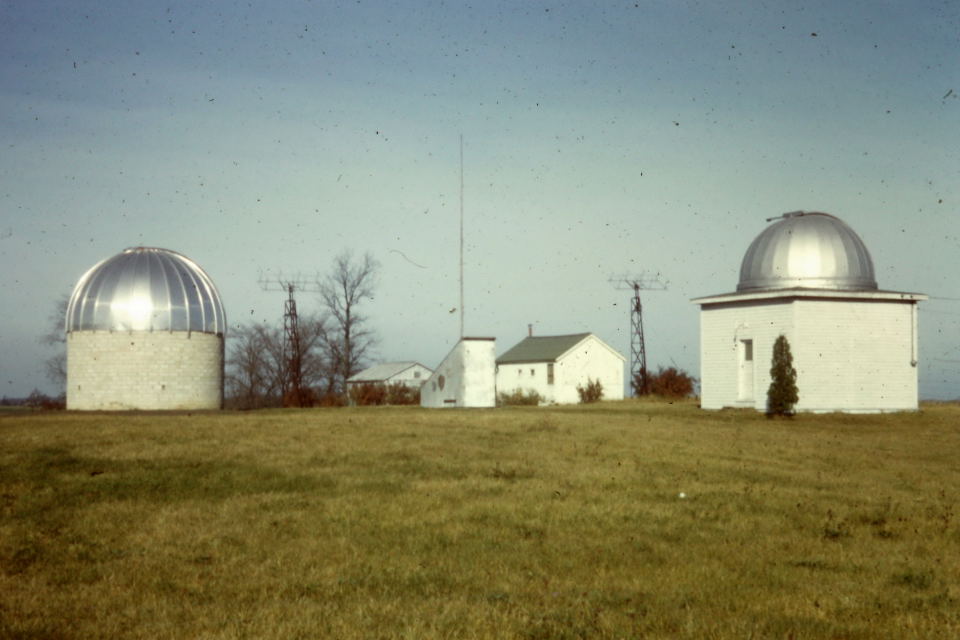
The photograph above shows our observatory as it looked by the end of
1951 with the new addition of the Buckstaff Observatory, although the slit
is still unfinished.
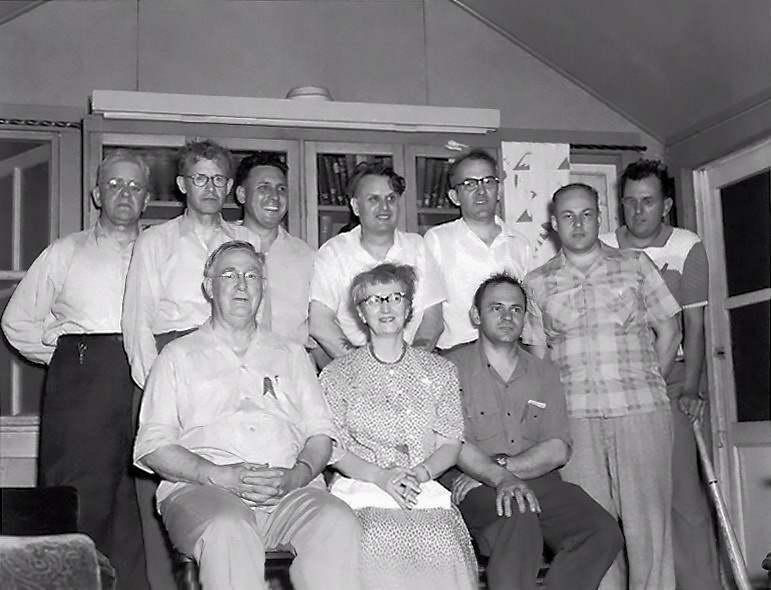
The picture above was taken in June of 1950. It is the only one of two known photographs the society has
taken inside the Monastery. Sitting (L to R) : Roy Dodd, Elizabeth Wight, Alfred Memmel. Standing (L to R): Herbert Cornell,
Ralph Buckstaff, Roy Lee, Edwin Schoenke, Edward Halbach, Joseph Stevens,
and William Albrecht (holding the baseball bat).
In 1952, Halbach received the
Amateur Astronomers Medal Award from the Amateur Astronomers Association of New York for his
meritorious services by an amateur to the science of astronomy.
This was just
one of many he would receive during his lifetime.
Having failed to raise enough money to build a third dome, a new rollaway shed is constructed to house the
10-inch reflector that was donated by Luverne Armfield. It was built in the
location of the rollaway shed that housed the extremely long 8-inch reflector donated
by A. C. Tabbott. The shed in this position (essentially between the A and B
Domes) becomes known as the C-Shed. The rollaway shelter that was there was
then moved some 20 feet north and west to house an Alvin Clark refractor
which became known as the D-Shed.
